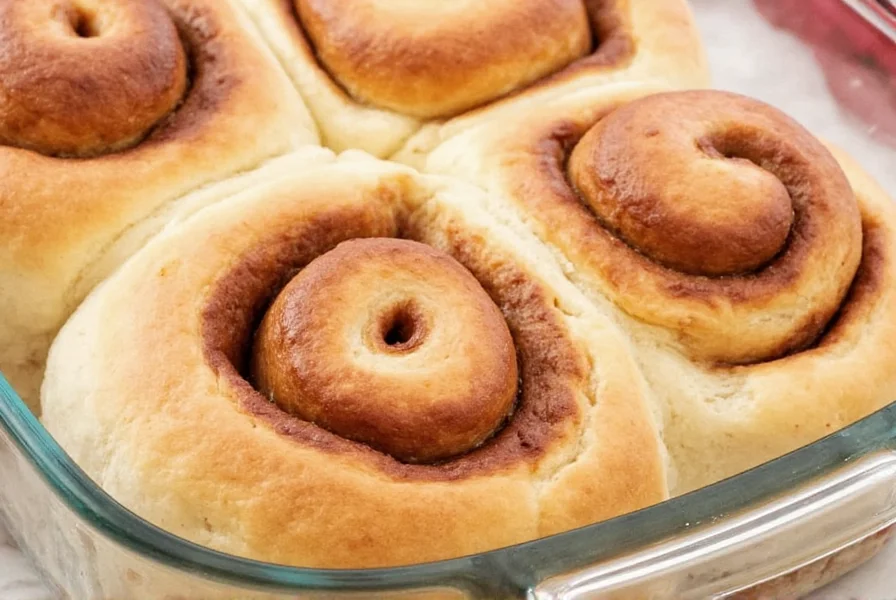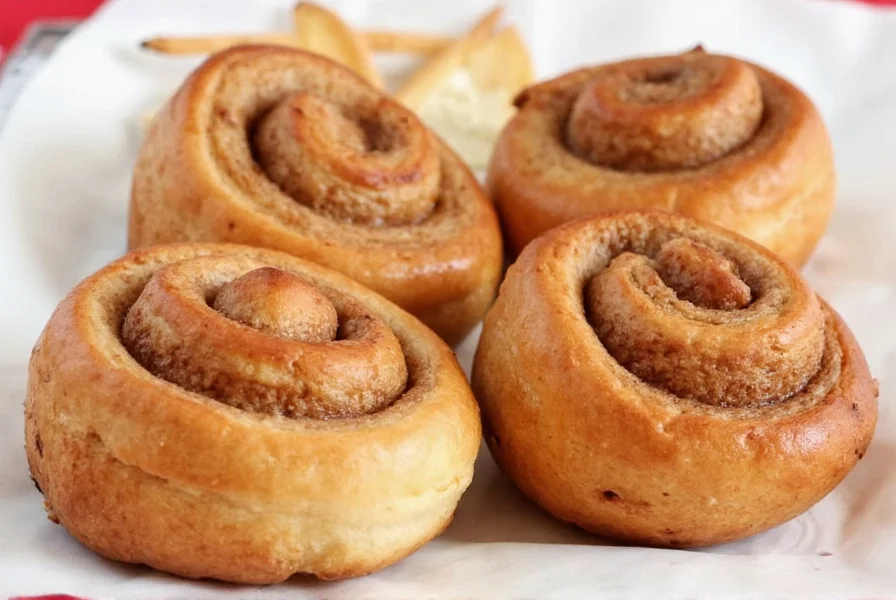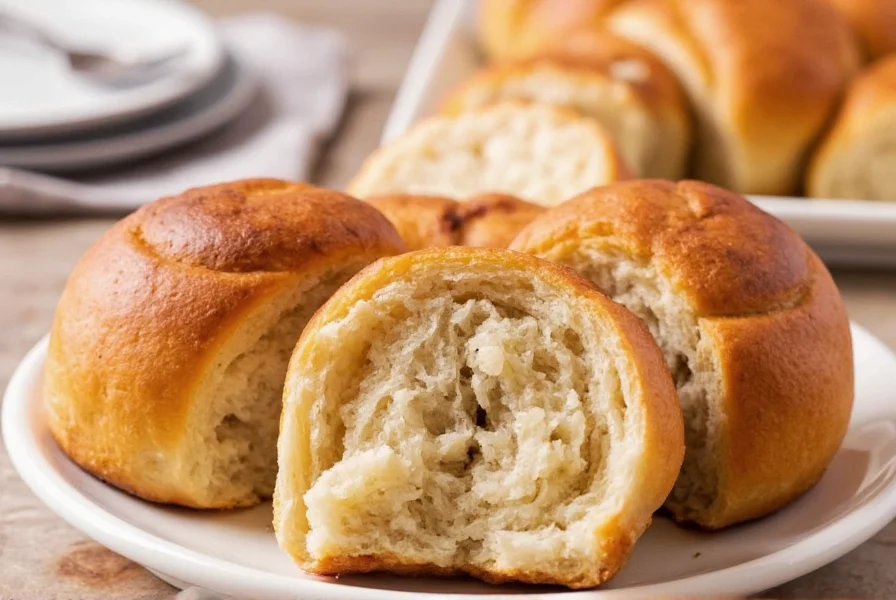Creating bakery-quality cinnamon buns at home is simpler than you might think when you understand the science behind the ingredients and techniques. This comprehensive recipe delivers consistently excellent results by focusing on precise measurements, optimal fermentation, and proper baking temperatures. Unlike many online recipes that compromise texture for convenience, our method prioritizes authentic flavor development through a slow first rise and careful attention to dough hydration.
The Science Behind Perfect Cinnamon Buns
Professional bakers know that exceptional cinnamon buns rely on three critical factors: dough hydration, yeast activity, and fat distribution. Our recipe maintains a 60% hydration level (ratio of liquid to flour by weight), creating the ideal balance between structure and tenderness. The secret to that signature pull-apart texture lies in the butter layer between dough and filling—when properly incorporated, it creates steam pockets during baking that separate the layers without compromising structural integrity.
Essential Ingredients Explained
Understanding why each ingredient matters helps you adapt and troubleshoot. We've specified both volume and weight measurements because baking is a science where precision matters.
| Ingredient | Volume Measurement | Weight Measurement | Function |
|---|---|---|---|
| All-purpose flour | 3 1/2 cups | 450g | Provides gluten structure; measure by spoon-and-level method |
| Whole milk | 1 cup | 240ml | Heated to 110°F activates yeast; adds richness |
| Unsalted butter | 1/2 cup + 6 tbsp | 170g | Room temperature for dough; melted for filling |
| Active dry yeast | 2 1/4 tsp | 7g | Fresh packet ensures reliable activation |
| Light brown sugar | 1/2 cup packed | 100g | Adds moisture and caramel notes to dough |
Step-by-Step Baking Instructions
Dough Preparation (45 minutes + 2 hours rising)
- Activate the yeast: Warm milk to 110°F (use instant-read thermometer), add 1 tbsp sugar and yeast. Wait 5-10 minutes until foamy.
- Mix dough: In stand mixer with dough hook, combine yeast mixture, 2 cups flour, melted butter, eggs, remaining sugar, and salt. Mix on low until combined.
- Knead: Gradually add remaining flour 1/4 cup at a time until dough pulls away from bowl. Knead 5-7 minutes until smooth and elastic.
- First rise: Place dough in buttered bowl, cover with damp cloth. Rise at 75-80°F for 1.5-2 hours until doubled.
Filling and Shaping (20 minutes)
- Prepare filling: Mix 1 cup brown sugar, 3 tbsp cinnamon, and 1/4 tsp salt. Melt 6 tbsp butter.
- Roll dough: Punch down risen dough and roll on floured surface to 18x12 inch rectangle.
- Layer ingredients: Brush with melted butter, then evenly sprinkle sugar mixture, leaving 1/2 inch border.
- Roll tightly: Starting from long edge, roll dough into log. Pinch seam to seal.
- Cut buns: Using dental floss (prevents squishing), cut log into 12 equal pieces.
Baking and Finishing (30 minutes)
- Second rise: Place buns in greased 9x13 pan, cover, rise 30-45 minutes until puffy.
- Bake: Preheat oven to 350°F. Bake 22-25 minutes until golden (internal temp 190°F).
- Cool: Let rest 15 minutes before glazing to prevent melting.
- Prepare glaze: Whip 4 oz cream cheese, 1/4 cup butter, 1 cup powdered sugar, and 1 tsp vanilla until smooth.
- Finish: Drizzle glaze over warm buns, allowing it to seep between layers.

Pro Tips for Foolproof Results
- Dough temperature matters: Keep dough between 75-80°F during rising. Too cold slows fermentation; too hot kills yeast.
- Avoid overbaking: Set timer for 20 minutes then check internal temperature—190°F is ideal. Overbaked buns become dry within hours.
- Cut with dental floss: Slicing with a knife compresses the dough. Unflavored dental floss gives clean cuts without deformation.
- Room temperature ingredients: Cold eggs or butter create uneven mixing. Take all refrigerated items out 1 hour before starting.
Common Mistakes to Avoid
Many homemade cinnamon buns fail due to preventable errors. The most frequent issues include:
- Using expired yeast: Always test yeast in warm liquid with sugar before incorporating. No foam means replace the yeast.
- Over-flouring the surface: Excess flour during rolling creates dry, tough buns. Use minimal flour just to prevent sticking.
- Rushing the rise: Proper fermentation develops flavor. Never reduce rise time below 1.5 hours for first rise.
- Incorrect oven temperature: Use an independent oven thermometer. Most home ovens have hot spots or inaccurate thermostats.
Variations for Different Dietary Needs
This classic homemade cinnamon buns recipe adapts well to various preferences:
- Gluten-free: Substitute 1:1 gluten-free flour blend and add 1 tsp xanthan gum to dough.
- Vegan: Replace dairy with almond milk, use vegan butter, and substitute eggs with flax eggs (1 tbsp ground flax + 3 tbsp water per egg).
- Lower sugar: Reduce filling sugar to 3/4 cup and use monk fruit sweetener in glaze.
- Flavor twists: Add orange zest to dough, pecans to filling, or swap cinnamon for cardamom for Scandinavian-style buns.

Storage and Reheating Instructions
Proper storage maintains freshness and texture:
- Room temperature: Store in airtight container for up to 2 days. Place parchment between layers to prevent sticking.
- Refrigerated: Keeps for 5 days. Reheat individual buns 10-15 seconds in microwave with damp paper towel.
- Freezing: Freeze unbaked rolls in pan, then transfer to freezer bags. Bake from frozen, adding 5-8 minutes to baking time.
- Reviving stale buns: Spritz with water and warm in 300°F oven for 5 minutes to restore softness.
Frequently Asked Questions
Can I prepare homemade cinnamon buns recipe the night before?
Yes, assemble the unbaked rolls in the pan, cover tightly, and refrigerate overnight. The next morning, remove from refrigerator 1 hour before baking to allow proper second rise. This slow fermentation actually enhances flavor development.
Why did my cinnamon bun dough not rise properly?
Common causes include expired yeast, liquid that was too hot (killing yeast) or too cold (not activating it), insufficient rising time, or a drafty environment. Always test yeast in warm liquid with sugar first—foam should appear within 5-10 minutes for active yeast.
How do I prevent the filling from leaking out during baking?
Ensure your dough is rolled to an even 1/4-inch thickness and leave a 1/2-inch border free of filling along the edge where you'll seal the roll. When cutting, use dental floss instead of a knife to prevent squeezing out the filling. Don't overfill—1 cup of sugar mixture is optimal for this recipe size.
What's the ideal internal temperature for perfectly baked cinnamon buns?
The ideal internal temperature is 190°F when measured with an instant-read thermometer inserted into the center of a bun. At this temperature, the dough is fully baked but still retains optimal moisture. Baking beyond 195°F will result in drier buns that stale more quickly.
Can I use instant yeast instead of active dry yeast in this recipe?
Yes, you can substitute instant yeast 1:1 for active dry yeast. The main difference is instant yeast can be mixed directly with dry ingredients without proofing in liquid first. If using instant yeast, you may notice slightly faster rising times—check dough 15-20 minutes earlier than specified.











 浙公网安备
33010002000092号
浙公网安备
33010002000092号 浙B2-20120091-4
浙B2-20120091-4